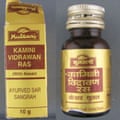A herbal “remedy” purportedly for low energy that is often used by shift workers contains opioids and other harmful substances, leading to an increasing number of people seeking help for addiction, doctors have warned.
A commentary published in the September Drug & Alcohol Review journal described how 12 patients in Queensland and 12 patients in Victoria presented to addiction clinics after taking Kamini, also referred to as Kamini Vidrawan Ras, a herbal medicine that is usually illegally imported from India.

Kamini contains opioids such as codeine and morphine in unknown quantities, and despite these substances having a sedative effect, it is often promoted as a stimulant. The Therapeutic Goods Administration has banned imports of Kamini but it can still be bought in some grocery stores and online.
The lead author of the paper, Dr Chris Tremonti, from St Vincent’s hospital’s alcohol and drug service in Sydney, said the increase in cases is worrying.
“Some of the people seeking help weren’t aware of the fact that this product has opioid in it,” Tremonti said.
“Most people who use opioids or other substances have some awareness of what they’re taking. So it was startling that people were taking this and seemingly totally oblivious to the fact that it had opioids in it and so there was a high risk of dependence.”
Tremonti said many of those seeking help reported working for ride-share companies and used the substance to work long hours and to get through shift work. He said a significant number of those seeking help were from India, Pakistan and Sri Lanka, and that it was important people who were concerned about taking Kamini felt comfortable seeking medical care.
after newsletter promotion
“In considering a response to Kamini, it will be important to engage with communities at higher risk, namely those from south-east Asian countries,” the paper said.
“This may help address key knowledge gaps including determining how widespread its use is, and if there are other undetected harms resulting from Kamini use, including undetected opioid toxicity … we may not yet be aware of the full scale of the problem.”
Dr Thileepan Naren, an addiction medicine registrar with Western Health in Victoria, has treated a number of patients in Melbourne experiencing opioid dependence after using Kamini.
“In our cohort we have seen the whole gamut of society using it, so transport workers yes but also white collar workers and manual labourers,” he said. “It’s often described as a stimulant to give people energy in order to do more work. It’s also then marketed for a wide variety of indications, so anything from an aphrodisiac to increasing stamina.”
Naren said some patients were aware Kamini contained opioids, and some were not, and that bottles sell for about $100 for 100 tablets. While he is not aware of any overdoses in Australia from the substance, he said little is known about use and effects, and more research is needed.
He said culturally appropriate education targeting communities affected would also be “crucial”.
